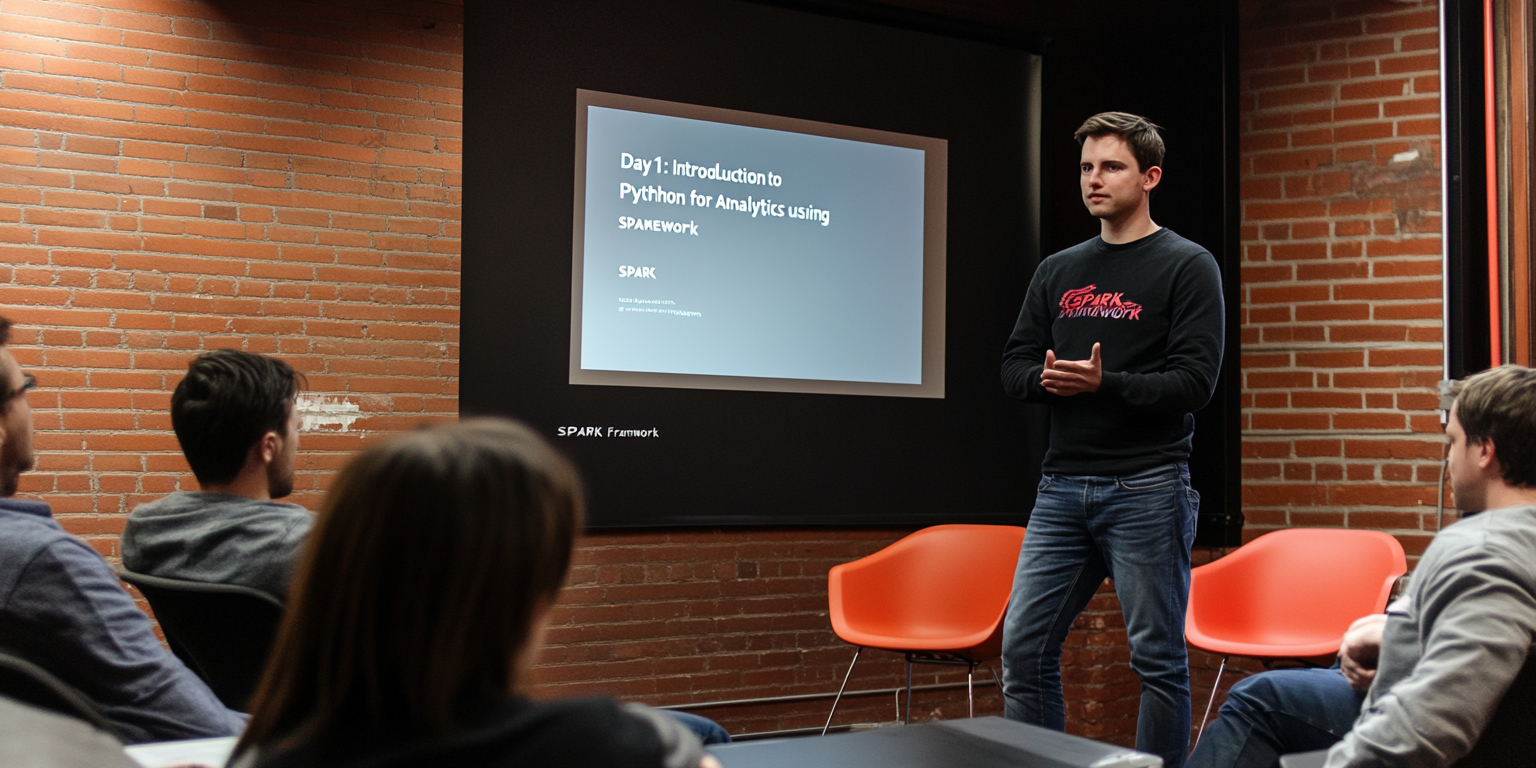Student Manual — Day 1: Introduction to Python for Analytics
(Powered by SPARK Framework + U2xAI)
Purpose of Today:
Today, you will build a deep, working understanding of Python basics:
- What are variables?
- Why do data types matter in analytics?
- How are they applied in real-world business datasets?
You will not just learn how to code.
You will understand the logic, practice real cases, simulate interview-style questions, and build a calm, confident mindset.
Today's Mission:
Master the building blocks of Python — the language of business data.
By the end of today, you should be able to write, explain, and connect basic Python concepts to real-world analytics.
"Learn it right once, and you will use it for a lifetime."
Today's Action Plan (SPARK Method)
| SPARK Step | Purpose | What You Will Do |
|---|---|---|
| Structured Learning (S) | Build deep understanding of variables and data types | Study What, Why, and How, using business examples via U2xAI |
| Practical Case Mastery (P) | Apply concepts to real-world business cases | Solve inventory tracking and pricing examples |
| Actionable Practice (A) | Perform real mini-assignments | Create, modify, and print basic variables |
| Real Interview Simulations (R) | Simulate early technical questions | Answer 5 common Python basics questions |
| Killer Mindset Training (K) | Strengthen calmness and clarity | Daily visualization and confidence building |
1. Structured Learning (S) — Deep Concept Understanding
Step 1: Understand Variables
Use U2xAI to ask:
"Explain what a variable is in Python, why it’s important for data analysis, and give business examples."
Learn:
- What: A variable holds information (example: sales_price = 29.99).
- Why: Variables let you track, manipulate, and analyze real-world business values like price, quantity, or customer status.
- How: Learn correct Python
product_name = "Laptop"
stock_quantity = 100
Step 2: Understand Data Types
Ask U2xAI:
"Explain int, float, string, and boolean data types with examples from retail or supply chain datasets."
Focus:
- int — Whole numbers (example: units_in_stock = 150)
- float — Decimal numbers (example: product_price = 299.99)
- string — Text (example: customer_name = "Jane Doe")
- boolean — True/False values (example: is_active = True)
Highlight:
"Using the wrong data type leads to wrong results. Accuracy starts with types."
2. Practical Case Mastery (P) — Real-World Application
Step 1: Connect Python to Business Cases
Ask U2xAI:
"Give examples of how an inventory system uses variables."
Examples you should practice:
- Track available stock (int)
- Store product prices (float)
- Save product names and categories (string)
- Flag products as in stock or discontinued (boolean)
Example Code:
stock_quantity = 200
sales_price = 45.99
product_description = "Wireless Headphones"
is_active = True
Takeaway:
"Every variable you create should mirror a real-world business element."
3. Actionable Practice (A) — Mini-Assignments
Assignment Set:
Work through these using U2xAI review after each:
- Create a variable for a product "Wireless Mouse" priced at 29.99, with 500 units available, marked as active.
- Simulate a sale: subtract 2 units from the stock.
- Print all variable values clearly.
Example Expected Output:
Product: Wireless Mouse
Price: 29.99
Units Available: 498
In Stock: True
Challenge:
- Create variables with all four types (int, float, string, boolean).
- Use comments in your code explaining each variable.
Ask U2xAI after each code snippet: "Review and correct my code. What could be improved?"
4. Real Interview Simulations (R) — Live Question Practice
Use U2xAI to simulate these 5 questions:
- What is a variable in Python, and why is it important for data analysis?
- Give an example where you must use a float rather than an int.
- How would you store a customer feedback comment in Python?
- How would you represent whether an item is available for sale using a boolean?
- What mistake could happen if you store product prices as strings instead of floats?
Tips:
- Speak answers aloud.
- Structure each answer: What → Why → Business Example.
Ask U2xAI: "Score my answers and suggest how I can be clearer."
Practice until you sound confident, simple, and sharp.
5. Killer Mindset Training (K) — Daily Confidence Routine
Use U2xAI to guide you through a short 2-minute visualization:
Visualization Steps:
- Picture yourself in an interview.
- Imagine explaining what a variable is calmly and fluently.
- Feel yourself being confident, clear, and professional.
Daily Affirmations: "I understand the basics deeply and use them smartly."
"I can explain clearly even under pressure."
"I am prepared to succeed."
Mindset Reminder:
"Calm thinking beats fast talking. Breathe, think, then answer."
End-of-Day Reflection Journal
After finishing today's practice, take 5 minutes to reflect:
- What concept did I understand clearly today?
- What mistake did I fix today?
- How confident do I feel explaining variables and data types (1-10)?
- What is one thing I can improve tomorrow?
Optional:
Ask U2xAI:
"Give me 5 random quiz questions about Python basics to end the day."
Today’s Learning Outcomes
By completing today's tasks, you have:
- Understood variables and data types from both coding and business views.
- Practiced applying concepts to real-world cases.
- Solved coding exercises with corrections.
- Practiced explaining concepts verbally.
- Strengthened your mental focus and calmness under interview conditions.
You are now officially on the right path to mastering analytics with confidence.
Closing Thought:
"True mastery is not knowing everything — it's deeply understanding the few things that matter."











